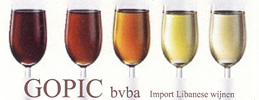Lebanon, (Arabic: لبنان), officially the Republic of Lebanon, is a small and densely populated country located on the far east coast of the Mediterranean. In the south it borders Palestine / Israel and in the east and in the north Syria.
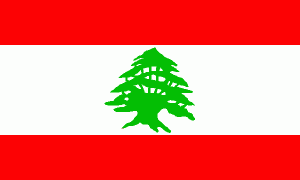
Geography
Lebanon, in Aramaic ‘Laban’ (yogurt) or ‘the white mountain range’, lies in the Middle East between Syria and Israel / Palestine on the Mediterranean. The surface area is 10,452 km², about one fifth of the Netherlands a third of Belgium. Two mountain ranges run in the longitudinal direction. The coastal plain is bordered by the steep Libanese Mountains. The highest peaks are Mount Sannin (2,630 m) and Qurnat as-Sawda (3,080 m). To the east of this mountain range the Bekaa Valley extends from north to south, a very fertile and water-rich plateau at an altitude of 900 to 1,600 meters. The Libanese Mountains protect the Bekaa Valley against the hot west wind in the summer and against the rain in winter. The Anti-Lebanon mountain range runs even more to the east.
Population and Religion
Lebanon has 4,467 million inhabitants (WB: 2013). It is a melting pot of the three most important monotheistic religions: Christianity, Islam and Judaism. The state recognizes 16 religious beliefs, including the Jewish one. Lebanon became independent (French mandate from 1920 to 1943) from France in 1943.
Economy
The economy runs on the banking sector and on services such as tourism and catering. An important part of the national income comes from the millions of Lebanese expats. Around 38% of the country is cultivated with grain, vegetables, fruit, tobacco and olives and there is a lot of animal husbandry. The industry varies from cement to textiles, clothing, furniture, preserves and light meals.
9,000 years of wine history
7,000 BC: Lebanon lies in a triangle that is the cradle of viticulture, formed by the Caucasus (modern Armenia and Georgia), Mesopotamia (modern-day Iraq) and Palestine. For the sake of prudence, modern science assumes that viticulture originated in Lebanon. The Phoenicians cultivated the first vines along the coastal strip 5,000 years ago. Excavations at the town of Byblos have found indications for this. Wine has played an important role in the Phoenician religion. The Greek god Dionysus or the Roman god Bacchus have their origin in the wine rituals from the Canaan. In the city of Baalbek are the ruins of the Temple of Bacchus built by the Romans in the 2nd century BC in honor of their wine god Bacchus. There are many images of vineyards and wine consumption.
3,000 – 330 BC: The Phoenician traders exported their wines to Egypt, Cyprus, Greece, Rome, Sardinia and Spain; Robert Ballard, an oceanographer from the United States, found two Phoenician wrecks 750 years BC containing a batch of wine that was still intact (see: http://newsoffice.mit.edu/1999/ships-0714). The wine seems to have been protected by the Phoenicians by a layer of olive oil on the wine and then sealed by a pine wood stopper with resin.
Lebanon’s reputation for producing quality wines continued until the Middle Ages, with Tire and Sidon wines highly appreciated in Europe and traded by Venetian merchants.
1517: The current Lebanon was incorporated by the Ottoman Empire. Making wine was forbidden, except for religious purposes. This gave the Christians of Lebanon, mainly Maronites and Greek and Armenian Orthodox, the opportunity to produce wine;
1857: Missionaries of the Jesuits introduced new methods for viticulture and vinification. They planted Cinsault, from the Algerian-controlled Algeria, at Château Ksara in the Zahleh district in the Bekaa valley, making them the founder of the modern Lebanese wine industry. The French engineer Eugène François Brun founded Domaine des Tourelles in 1868.
1918: Between the two world wars, it was the French influence that promoted the culture of wine drinking. Through its role as a cosmopolitan and financial center, Lebanon experienced a golden age, creating new opportunities for a thriving wine culture. Some wineries were already active in the 1960s.
Château Nakad was founded in 1923 and Gaston Hochar started in 1930 with Château Musar.
1975-1990: Lebanon slipped into a 15-year civil war that hampered the development of the wine sector, causing a huge decline in the production of wine. After this war, the only known wine producers were Ksara, Kefraya and Musar.
1992 – present: It was only in the 1990s that viticulture was given a new impetus with the creation of Domaine Wardy in 1997, Massaya in 1998, Château Saint-Thomas and Heritage. The French influence remained great. The current peace offers new opportunities and causes unexpected growth. For that matter, the 2006 conflict did not change much in the course of new developments (except that it was harvested later than usual), even though some of the vines were missing after harvest. Massaya’s harvest was unfortunately completely destroyed. Despite – or perhaps thanks to – the disturbances, the demand for Lebanese wine increased.
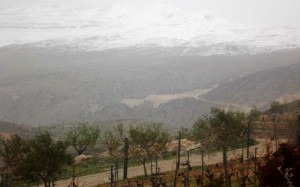 Difficult conditions
Difficult conditions
The conditions under which Lebanon’s wine production takes place are not easy. In 2006, a short but fierce war with Israel raged, with tragedies on both sides and more than 1,000 deaths threatened to be lost in that year. But the worst was the civil war from 1975 to 1990. In Lebanon much was destroyed and 150,000 people were killed and hundreds of thousands injured.
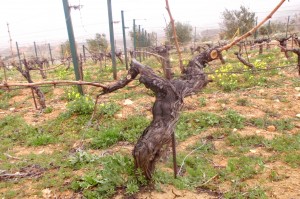
Harvesting during the war
The 2006 harvest was done by office workers, cleaning staff, board members and truck drivers, as pickers were not to be found in the conflict with Israel. At Château Ksara the load of a neighbor’s tractor with new pipelines for irrigation, since for weaponry. A rocket destroyed the tractor, load and environment, causing a lot of damage to the winery. But the harvest and the vinification simply continued. Now in Beirut and in the wine regions you see countless checkpoints with armored cars and heavily armed soldiers. And the population remains positive and thinks optimistic about the future. With every war or conflict one becomes more determined
Regulation
A few wine producers of the Union Vinicole du Liban are working towards the establishment of a wine institute that establishes stricter rules for viticulture and wine production and ensures control and enforcement. There is still too little regulation. However, the most important wine companies are already working responsibly to be able to participate internationally. Although three quarters of the wine producers are Christian, everyone realizes how important the wine sector is for Lebanon.
Soil and climate
All Lebanon consists of calcareous mountain ranges and a soil condition that makes it possible to produce elegant wines. Due to the dry climate 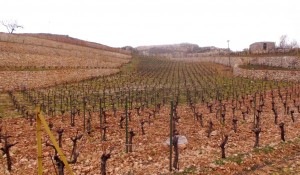 during the entire flowering and ripening period of the grape, there are no harmful (fungal) diseases, so it is not necessary to use pesticides as pesticides. This guarantees the purity of the wines.
during the entire flowering and ripening period of the grape, there are no harmful (fungal) diseases, so it is not necessary to use pesticides as pesticides. This guarantees the purity of the wines.
Wine areas
Bekaa Valley
The Bekaa Valley is the most important production area of Lebanon. The region has dry and sunny summer months with temperatures up to 40 ° C, cool nights (10 ° C) due to the high location and regular precipitation, so no desertification takes place. In the summer a dry wind often blows from the Gulf or from Egypt. The winters are strict, with low temperatures and a lot of snowfall, but there is rarely frost damage. The area has its own natural water management, thanks to snow melt from the peaks of the Lebanon
 and anti-Lebanon mountain ranges, so that some grape varieties rarely mature before middle, and even end, September. The yields are fairly low with an average of 31.5 hl / ha. The large wine producers of Lebanon are located in the southern part of the Bekaa valley, mostly at an altitude of 1,000-1,400 meters. The stony soil is rich in lime, with a top layer of clay or clay, and sometimes with stones, gravel or red soil.
and anti-Lebanon mountain ranges, so that some grape varieties rarely mature before middle, and even end, September. The yields are fairly low with an average of 31.5 hl / ha. The large wine producers of Lebanon are located in the southern part of the Bekaa valley, mostly at an altitude of 1,000-1,400 meters. The stony soil is rich in lime, with a top layer of clay or clay, and sometimes with stones, gravel or red soil.
New wine regions: Batroun, Kfifane, Bhamdoun, Richmaya, Majdel Maouche, Jezzine.
The new hilly wine region of Batroun lies on the coast, north of Beirut. In this second wine region of Lebanon, 8 wine companies have already established themselves. The vineyards are at 400-1,300 m altitude and some have a view of the sea. South of Beirut near Jezzine and even more to the south there are a number of wineries. Thanks to, among other things, special terroirs and mesoclimates, they are very successful. Château Ka has replanted all its vineyards in Baälbek.
Grape varieties
It is mainly the French and Mediterranean grape varieties that are grown in Lebanon. Red: Cabernet Sauvignon, Cabernet Franc, Malbec, Petit Verdot, Merlot, Cinsault (bush vines), Carignan, Grenache, Syrah, Mourvèdre, Pinot Noir, Gamay, Tempranillo.
White: Chardonnay, Muscat, Sauvignon Blanc, Sémillon, Viognier, Gewürztraminer, Clairette, Ugni blanc. The native white varieties Obaideh, Youssefi and Merwah are mostly used for the production of arak, a brandy with green anise, but Musar makes white wine.
Some vineyards now have vines depending on the grape variety that are tied up along wires instead of the usual bush vines. All work is done in the vineyards.
Our wines come from different regions:
South Western Bekaa Valley
- Chateau Qanafar
- Cave Kouroum
Central Bekaa Valley
- Domaine Cortbawi
- Chateau Khoury (Organic)
- Côteaux Du Liban
Batroun Region
- Aurora
- Batroun Mountains (Biological)
South Lebanon
- Karam Winery
Winemakers
Typical of the Lebanese winemakers is the fact that they dare to experiment. Although most of them have studied in France, they go a step further than the French winemakers because they use several grape varieties together.
The climate and grapes will not be an issue. The warm days and cool nights ensure that the grapes thrive. Cultivation starts from 500 to about 1700 meters altitude.
